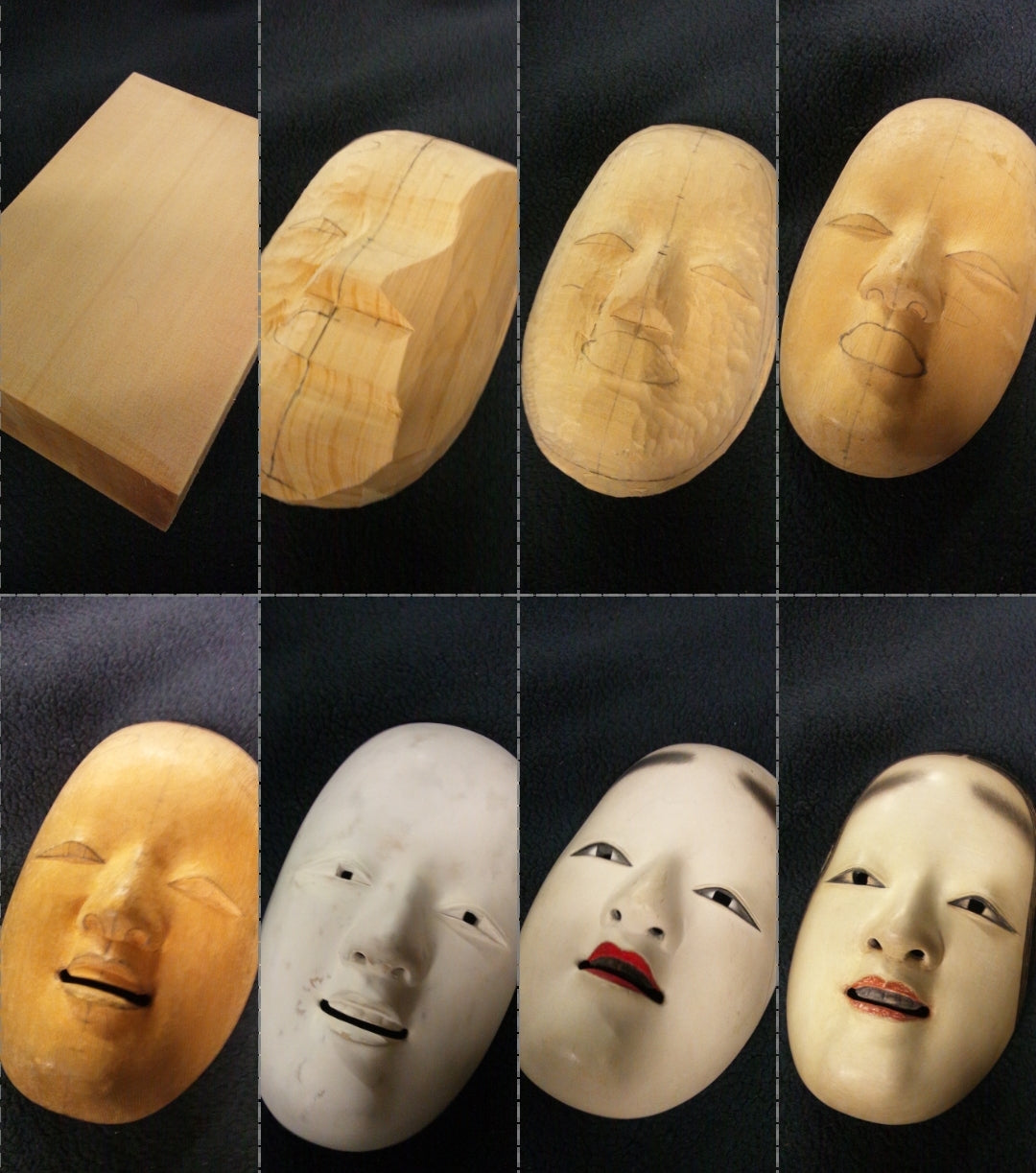For the twenty-first entry in the written "The Figure Behind the Ink" series, we have a special treat for you all - An interview with a Noh mask maker and former Noh performer @uda14nowhere.
Learn about how the culturally-significant, Kyoto-based Keiko Udaka makes masks for the UNESCO designated "Intangible Cultural Heritage" world of Japanese Noh performances, her family involvement in the art, and more. An insider look into the world of Noh.
This interview was originally published in the @waboripedia Instagram page on 2/28/2025, and constituted of (3) posts.

What is Noh, and what makes it special?
Noh is the oldest theatrical art that still exists in Japan. It has been performed for over 650 years. What makes it special are the numerous Noh masks. Noh masks have such a special meaning that many Noh actors say that the mask itself is the main element of the Noh play.

What is your relationship with Noh, and how did you get involved with Noh mask making?
My late father was a Noh performer and mask maker, so Noh was close to me even before I was born. I started learning chanting and dancing at the age of 3, and made my first Noh mask at 10. After a short break, I began to make Noh masks in earnest after graduating from college.

What are the different masks typically used in Noh theater?
They can be categorized into six types, such as the masks of the Okina group, old man, demon, women, vengeful ghosts and men. There are about 60 basic types, but it is said that there are more than 200 types in existence today.

Do you have a favorite mask to make or a design that holds special meaning for you?
The Noh masks I love to make are masks of characters who are suffering or troubled, or living on the edge of grief or adversity. I am especially attached to the masks called "Masukami" because I can relate to them as if I were projecting myself onto them. I have already made two Masukami masks and would like to make more.

Explained simply, what is the process of making Noh masks?
Simply put, the two processes are carving and coloring. Sometimes metal fittings are formed and hair and beards are planted using horse tail.

How did being a child Noh actress influence the way you approach mask creation?
I believe that experiencing the unique atmosphere on stage and experiencing up close the power of Noh masks, which are alive with soul, gave me the opportunity to understand how Noh masks can be combined with actors to give off their charm.

What would you say are the most important elements that make a great mask?
The most important thing is to grab the audience's attention with charisma to lead the story, and the expression of the Noh mask must appear to change with the actor's movements. In addition to that, it must make people who see it up close feel its overwhelming beauty.

What inspires your work outside of traditional Noh theater? Are there modern influences or personal touches in your masks?
There are many things that inspire me to create Noh masks. Music, movies, books, paintings, photography, fashion, makeup, conversations with people... I sometimes incorporate specific makeup methods into my work.

Besides making masks, you also offer crafting classes. What can you tell us about your classes and what do you aim to achieve with these?
People who are unfamiliar with Noh masks often say they are scary. In my classes, I teach them about Noh masks in detail, so they will find Noh masks more attractive than scary. My aim is to help students learn about the many fascinating aspects of Noh masks, while cultivating their knowledge and appreciation of Noh masks and the joy of handcrafting.

How can somebody purchase one of your masks?
It is actually best if you see it in person and purchase it, but you can email me directly and I will respond to your inquiry.

What is next for Keiko Udaka?
I would like to create Noh masks that are not limited to the existing shapes and colors of Noh masks, but that reflect the modern age by incorporating free expression.

Please feel free to add anything you would like to share with international audiences.
In this day and age of 3D printers and AI, we tend to lose sight of the value of things created by human hands. However, I know that failures and unexpected errors that cannot be created by machines can eventually turn into excellent works of art, and that works with soul created through hard work can teach us many things. I hope that Noh masks will continue to be one of such works in the future, and I would like to create works that will capture people's hearts with all my energy.

About Keiko Udaka:
@uda14nowhere is a Kyoto, Japan-based Noh mask artisan, whose beautiful Noh masks display great power in the Noh performance stage. Visit @uda14nowhere's page to learn more about the world of Noh performances and masks, as well learn about her mask-making classes or even purchase a mask of your own.

